The Schiller Institute has organized in Paris an international conference titled “Water for Peace”. Various speakers from different countries participated on the conference held in January 9, 2024.
As United World International, we consider the conference of strategic value and will publish in two parts the notes of Odile Mojon, one of the organizers.
Below is the second and final part.
The second session gave other concrete examples of projects: one in Africa, the other in Afghanistan, two very different regions. In Africa’s Albertine Rift, where freshwater is in abundance, the challenge is to interconnect the great lakes. In Afghanistan, the drilling of the Qosh Tepa canal, under difficult political conditions, appears to be the key to the stabilization and development of this country. This project cruelly highlights the difference of approach between Afghanistan and the countries of the Fertile Crescent. In Afghanistan, despite the hostility of the “international community”, a political agreement has been reached for this vital project; in South West Asia, the situation of almost permanent war, maintained by the same “international community”, swipes away every day any real prospect of a peaceful solution.
Last but not least, the civilizational dimension of water is intimately linked to the carrying capacity of our societies. This is closely correlated with the density of energy flows available to said society; this is the principle, introduced by Lyndon LaRouche, of “Potential Relative Population Density”. But shouldn’t we also include water? If greater energy consumption (and denser energy) per individual is the marker of any more developed, educated and modern society, what about water?
This is a relative scarcity, since water is a renewable resource, and the main problem is its uneven distribution across the Earth’s surface. Added to this is the most advanced state of knowledge, thanks to cutting-edge technologies, which has revealed the presence of underground freshwater in proportions far exceeding the quantities recorded on the surface.
Such a discovery, largely unknown to the general public, changes the whole picture and raises the political and cultural stakes. Will certain powers want to use water as an instrument (for example, by starting to privatize it), to make it the ideal weapon of domination? Conversely, will we manage to reach an agreement in the name of the general interest, because there is nothing to prevent us, notwithstanding the genuine technical challenges to be met, from making water the preferred instrument of peace for the world.
José Mulenda: A major project to show the “face of peace” in Africa
José Mulenda, writer, jurist and economist, is an independent researcher. For several years now, he has been fighting for the “Sula Yaamani” project (Swahili for “Face of Peace”).
He recalled the injustices suffered by this region, from deaths in rubber production in the 19th century, in arms production in the 1st and 2nd World Wars, to the genocide of 1994.
Against this backdrop, CSP REGLA, the French association he chairs and which is registered in the Democratic Republic of Congo, is fighting for the development of the great lakes of the East African Rift in the DRC, as an alternative for peace, development and security in this part of the country and in the sub-region.
In a world where water is becoming increasingly scarce, Mulenda recalls that the great lakes of the East African Rift – Lake Victoria, Lake Albert, Lake Edouard, Lake Kivu, Lake Tanganyika, Lake Rukwa, Lake Malawi, etc. – are among the largest lakes in the world. – are among the world’s largest freshwater lakes:
They also represent enormous economic potential for agriculture, fishing, transport, hydroelectricity and tourism in this same region, where the natural wealth of the subsoil is immeasurable. Linking these lakes in stages to the Indian Ocean, of which they were, according to other sources, a cove in the Quaternary era, is a fundamental option for unlocking the cultural and economic potential of this area, in order to guarantee regional economic integration, re-establish the indispensable prerequisite of peace and promote efficient policies.
This innovative infrastructure project creates ecological resilience for national, articulated territorial planning, taking into account the urbanization and industrialization of the Democratic Republic of Congo. The Lukuga Canal will link this project to the Congo River via the Lualaba from Lake Tanganyika.
The development and interconnection of these lakes, like the Great Lakes region in Canada or the Rhineland and Danube in Europe, through the St. Lawrence River canal and the Rhine-Main-Danube junction canal respectively, is a fundamental option for unlocking their economic potential. In this context, the DRC is the linchpin of this development frontier.
Karel Vereycken: rebuilding Afghanistan and developing all the nations of the Aral Sea basin
Whatever one may think of the current regime in Kabul, explains geo-economic expert Karel Vereycken, who visited the country in early November, Afghans today are fully determined to rebuild a country ravaged by 40 years of war and corruption. Hence the construction of the 285 km long Qosh Tepa canal, a heroic effort by an entire nation to irrigate almost half a million hectares of farmland in order to double wheat production and become a grain-exporting country.
How did the world react? On November 9, Khaama news agency reported that “Abdul Haq Hamad, former head of media supervision, said in a televised debate that Pakistani authorities had asked Taliban administration leaders at an official meeting to ‘cease operations on the Qosh Tepa Canal’.” The Pakistani authorities are concerned that “Afghanistan is gaining autonomy in the management of its waters thanks to this canal”.
In France too, on November 7, Cédric Gras, Le Figaro‘s correspondent in Tashkent, accused the Taliban of digging “the canal of discord (….), a gigantic irrigation canal (…) to the detriment of downstream countries and the Aral Sea, whose water supply and agricultural crops are threatened”.
What’s really at stake? Yes, the new canal will capture part of the water from the Amou-Daria which, along with the Syr Daria, no longer feeds the Aral Sea but the vast cotton-growing areas of Uzbekistan and Turkmenistan. The “Aral Sea Basin” captures the rainfall of five Central Asian countries: Kazakhstan, Kyrgyzstan, Tajikistan, Uzbekistan and Turkmenistan. The forgotten country, Afghanistan, is geologically part of the same basin. In terms of water resources, these countries are linked by the fact that the Aral Sea basin is an “endoreic basin”, where all water resources end up underground or in a sort of inland sea with no outlet to the oceans. Faced with a relatively finite resource, concerted action is essential. Under the Soviet system, a quota system was adopted, setting a percentage of total water for each country. But the “upstream” countries (Kyrgyzstan and Tajikistan, which derive 90% of their electricity from the abundant winter water that powers the turbines in their dams) are reluctant to release their water in spring and summer, when the neighboring “downstream” countries (Uzbekistan and Turkmenistan) need it to irrigate their crops. To compensate for their losses during these seasons, the USSR offered them the equivalent in energy (oil). For want of a better solution, this system was maintained after the collapse of the USSR. By including energy in the water-sharing equation, Central Asia has so far managed to avoid water-related conflicts.
Today, Afghanistan, which has a legitimate right to benefit from the water it supplies to the Amudarya, is not declaring war over a fixed resource, but entering a process of mutual sharing and putting its partners’ backs against the wall. This new situation requires all Central Asian countries to invest in their hydroelectric structures and, above all, to adopt more efficient, less water-consuming irrigation techniques, such as those presented by the Chinese speaker from Xinjiang in the previous round table.
Pierre Berthelot: Is mutual development around water possible in the Fertile Crescent?
Pierre Berthelot, associate researcher at IPSE, member of the Académie de l’Eau and director of the journal Orients Stratégiques, began by examining the benefits of the “Fertile Crescent” project and, secondly, the difficulties of implementing it.
The project is obviously beneficial. All countries have an interest in working together to maximize the region’s water resources and economic development projects. All the more so as populations are growing rapidly, and it is necessary to provide urban populations with water in sufficient quantity and quality.
Many of these countries are experiencing water shortages, which are also causing internal tensions. Mr. Berthelot spoke of cooperation projects launched in the past, but which were aborted, not for technical reasons, but often for political ones.
He referred in particular to the “Peace Pipelines” project undertaken by Turkey in 1990/91. Turkey, rich in water, offered its water to the countries of the region, in exchange for cheap energy. But it didn’t really work. Water transfers are widely criticized by experts. We can’t rule them out, they say, but we have to be careful: the cost is colossal and so is the ecological impact. We also need a zone of peace… and we know what happened to the Oslo Accords. Pierre Berthelot also mentioned the proposals made along these lines by Egyptian President Anwar Sadat at Camp David, and by Eisenhower in 1950.
But all these projects were abandoned, not for technical but for political reasons. What are the difficulties of implementation today?
Berthelot cites the hydro-hegemonism of the two powers involved:
— Türkiye, in a hegemonic position because the waters of the Tigris and Euphrates rise in its mountains and it can turn off the tap at will.
— Israel, whose various conquests have turned a downstream country into an upstream one.
To envisage a cooperation project, relations between these two states and the other states in the region would have to be calmed. However, current geopolitical tensions are preventing the establishment of the Fertile Crescent, as another concept is emerging on the ground, that of the “Shiite Crescent”: a zone of influence where Iranian political Shiism would extend as far as Lebanon. But for some, this alliance, born of American intervention, must be broken.
The speaker concluded: “If we want to realize this cooperation project, which is perfectly feasible from a technical point of view, it will only be possible through a reconciliation or a minimum agreement between the United States and Iran”.
Alain Gachet: water in abundance
Alain Gachet, Ingénieur des Mines, PhD in nuclear and quantum physics, founder of RTI Exploration, has demonstrated that science can provide solutions.
There’s a lot of talk about water at the moment, more than ever, but we’re talking about the surface water we see; I want to talk about the water we don’t see! Twenty years ago, when I was interested in the molecular structure of water, I discovered an algorithm that reveals the vibratory dance of water under microwave excitation. These microwaves are emitted by radar satellites at 800 km altitude and over entire countries.
And the rest is a matter of petroleum geoscience (I’m a former oilman), which has enabled me to draw up the maps needed to help drillers. I’ve named this algorithm “Watex” (Water Exploration), and it enables me to visualize in very concrete terms what NASA has been announcing for 30 years: that there is 100 times more water underground than all the lakes and rivers combined on the earth’s surface! The goal? Water security, but also food security, as traditional crops in almost every corner of the globe are now doomed by the deregulation of the seasons.
Rain doesn’t arrive at the right time, and plantations die. So we need to irrigate, and once we have these groundwater maps, we can draw up agricultural and industrial development master plans for all the institutions that request them and for governments, as I had the honor of doing in Niger with President Bazoum before the coup d’état.
If I had invented this algorithm so soon, the Darfur crisis would have broken out. In 2004-2005, almost 20 years ago, I was called in to do my first work on water in the Darfur refugee camps. In Africa, as in the rest of the world, the worst tragedy of the 21st century is brewing. The UN officially fears “a hurricane of famines in the weeks and months ahead”, exacerbated by ongoing wars.
Europe hasn’t taken the measure of this drama, which has been brewing for 30 years, and we’ve been seeing thousands of climate refugees flooding into Europe for almost 15 years now. This is what outrages me. I’ve been personally denying it for 20 years by making water gush forth in the most hostile areas of the planet, for which I was honored by NASA in 2016. The task ahead is immense and urgent. So let’s stop lamenting climate change and build a future together, because the solutions do exist.
Sébastien Drochon: Water, energy and the density principle; The foundations of physical economics
Sébastien Drochon, head of scientific affairs at the Institut Schiller, presented some of the foundations and principles of physical economics as elaborated by the American economist Lyndon LaRouche, and related these reflections to the question of water in the human economy.
He elaborated on what it means to increase the carrying capacity of a given territory. Depending on the starting conditions offered by a given territory, how can we ensure access to decent housing, food, water and basic economic and social infrastructures?
He shows how this objective results in a simultaneous increase in population density, healthy life expectancy and average annual per capita energy consumption, among other things. He emphasized the importance of the latter, which for many may seem frightening or unnatural. In reality, however, the increase in annual energy consumption per capita is made possible by the labor savings made in the production process, which in turn is made possible by successive leaps in technological progress involving an increase in the density of energy flows within production processes.
Drochon then asked, “If our principle applies to energy, how could it not apply to water consumption, which is intimately linked to energy? Shouldn’t we also be looking for an increase in average annual water consumption in our society, to ensure a healthy economy? This will be made possible by future technological and scientific advances, which will see water increasingly produced and generated directly by human action, rather than as a resource to be tapped. Whether we’re talking about the desalination of seawater or the detection of underground aquifers using the technology developed by Alain Gachet, this water will be the direct fruit of a greater capacity for work on the part of society as a whole. This will ensure real social and economic justice.”
Concluding his speech on the need to establish a culture of progress that is genuinely human and aimed at the good of all, Sébastien Drochon concludes with two quotations:
One from François Rabelais in Gargantua: “Science without conscience is but the ruin of the soul”.
And another one from Marie Curie: “In life, nothing is to be feared, everything is to be understood”.







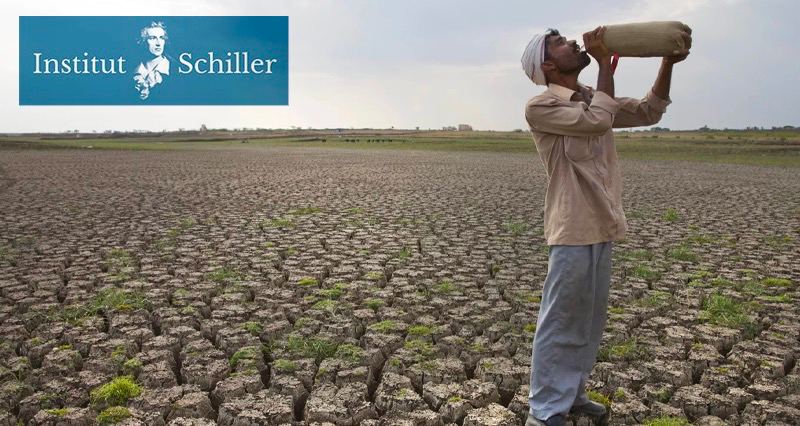
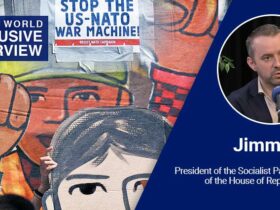
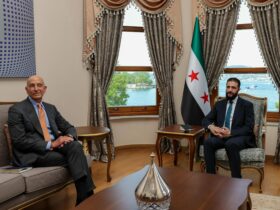
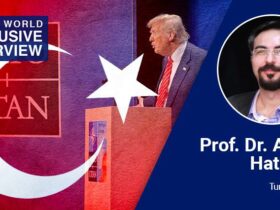
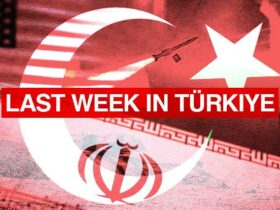
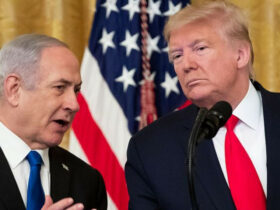

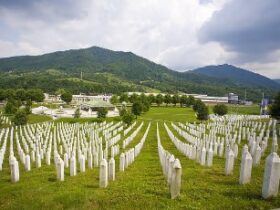
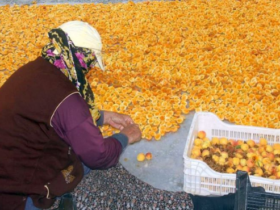

Leave a Reply